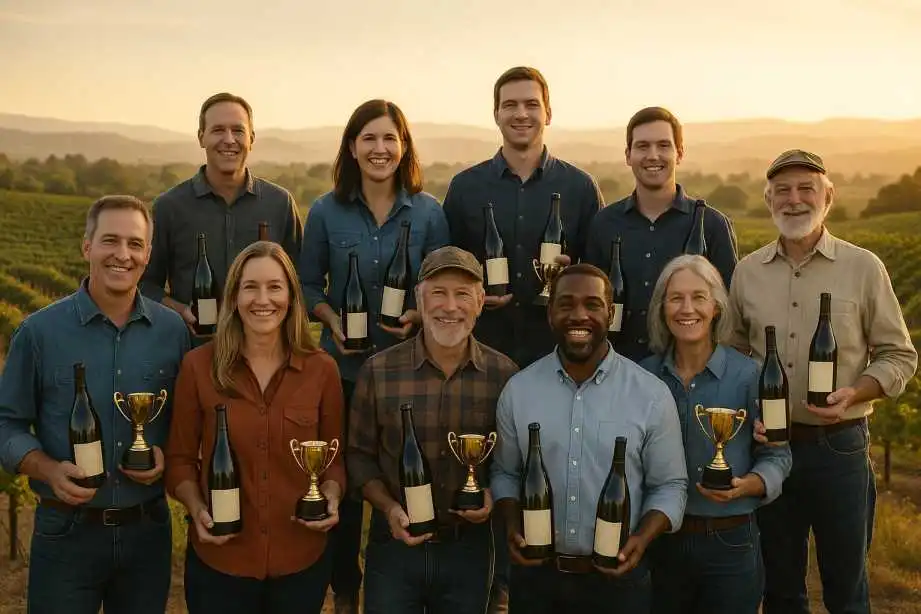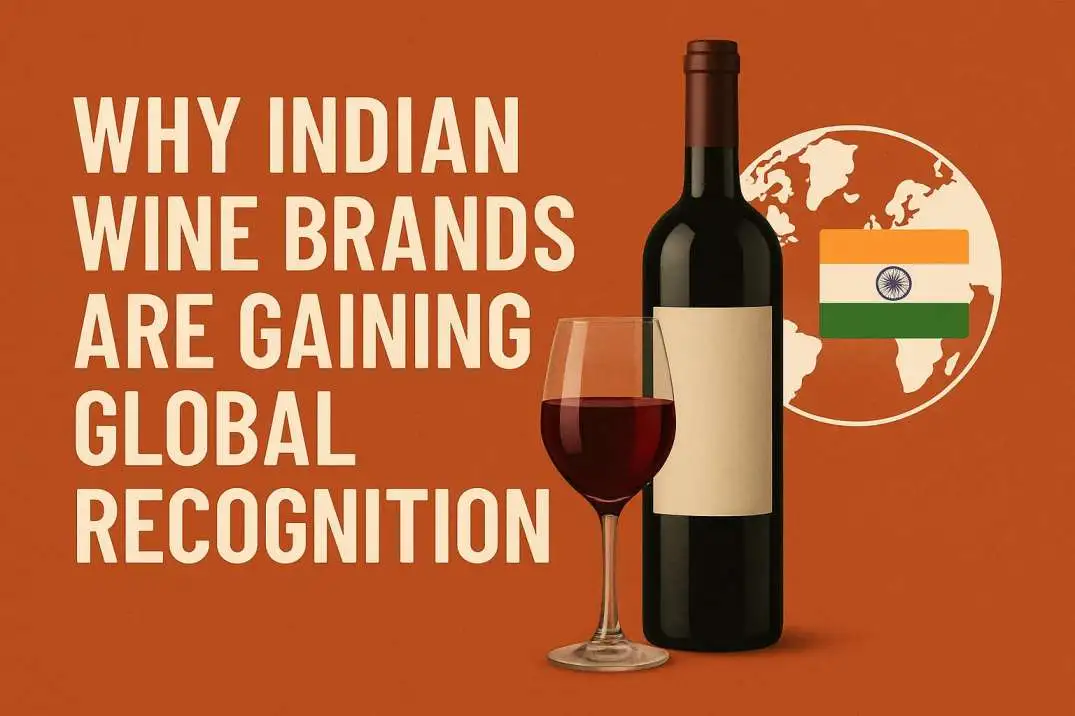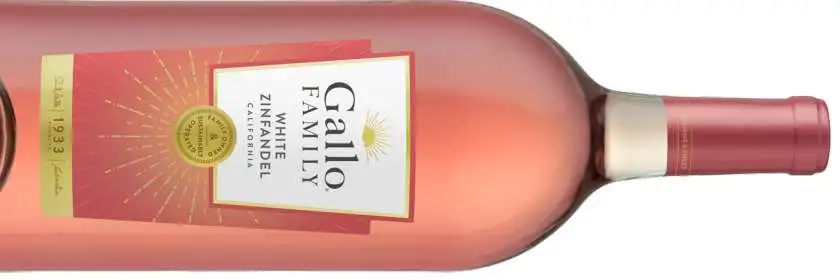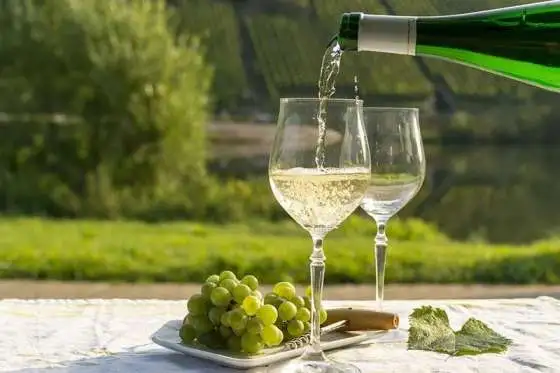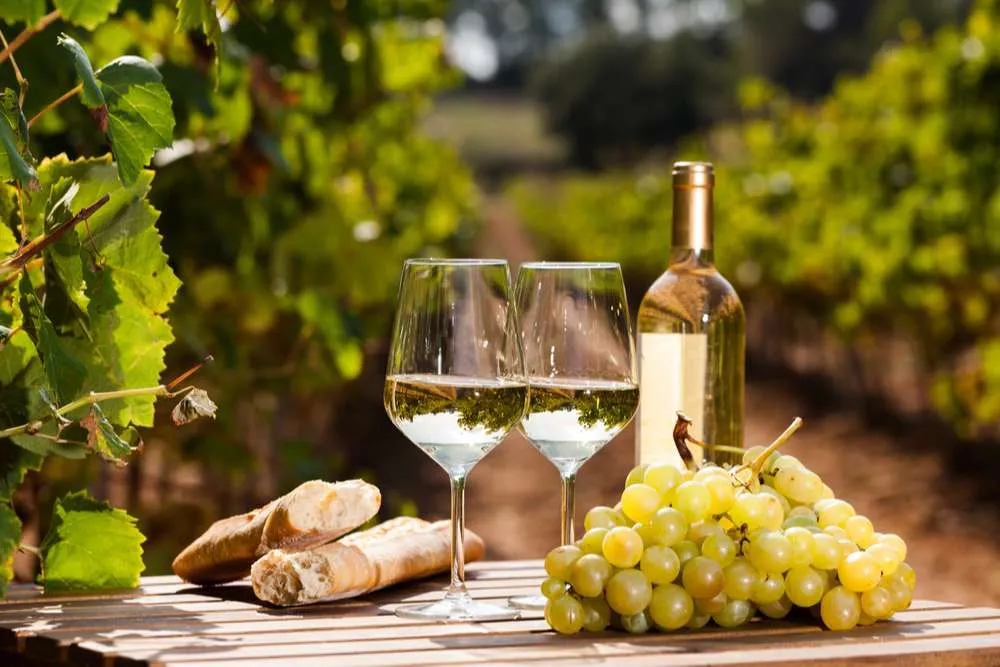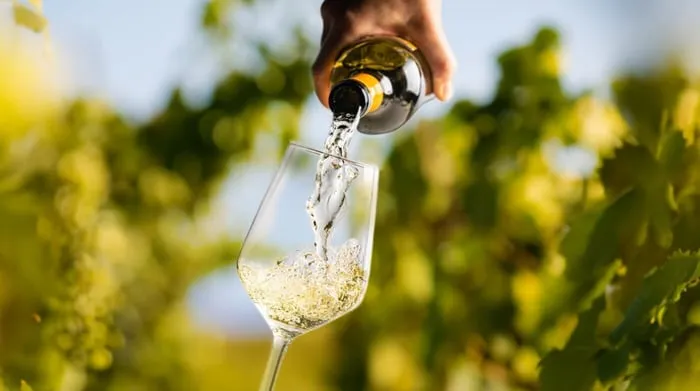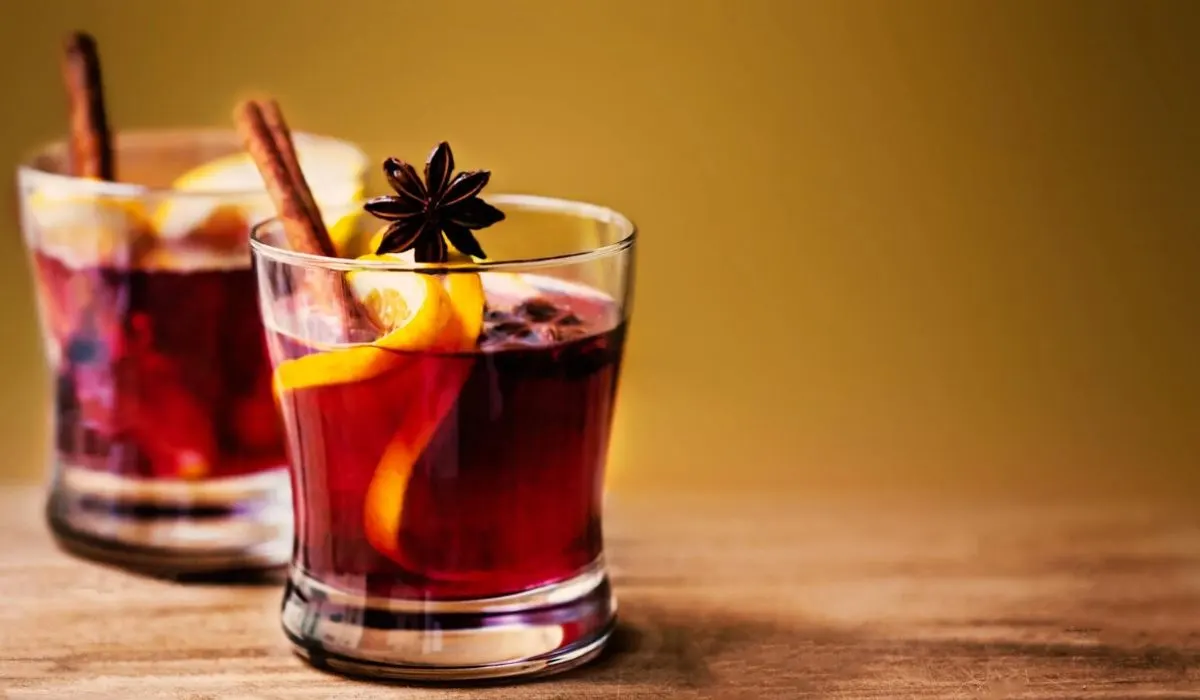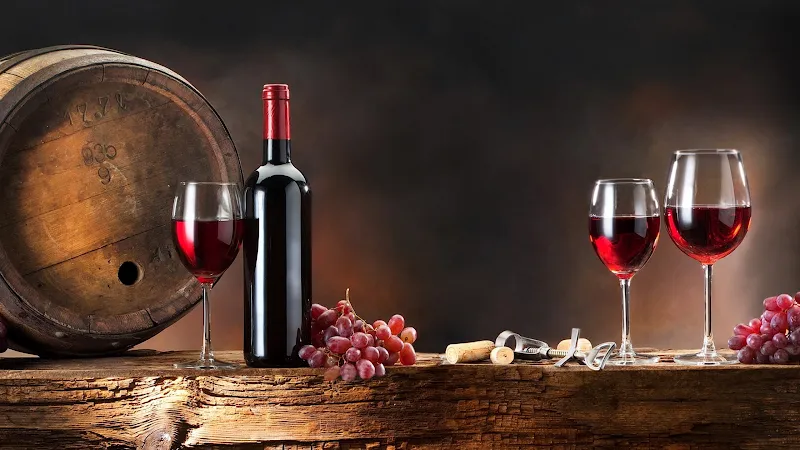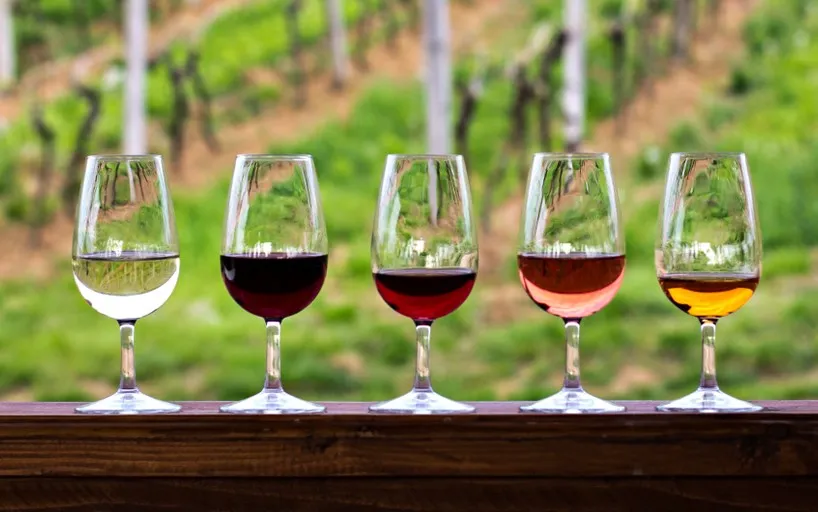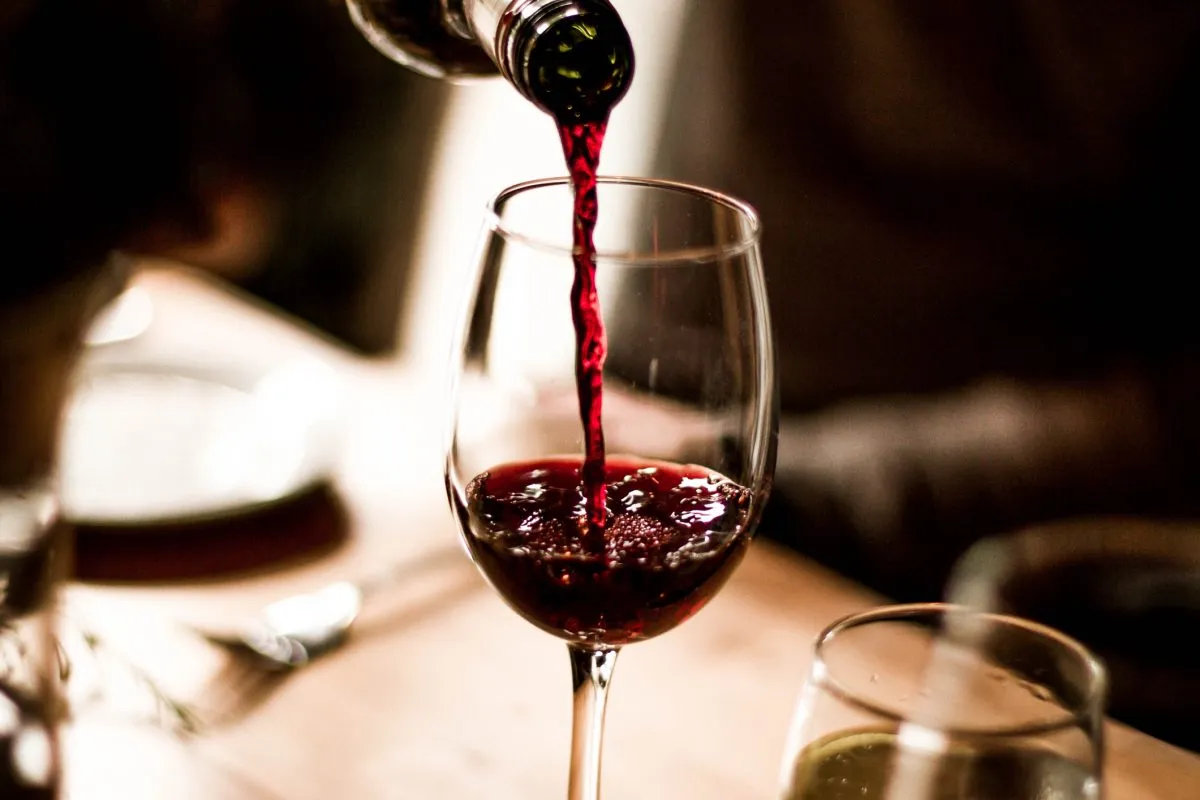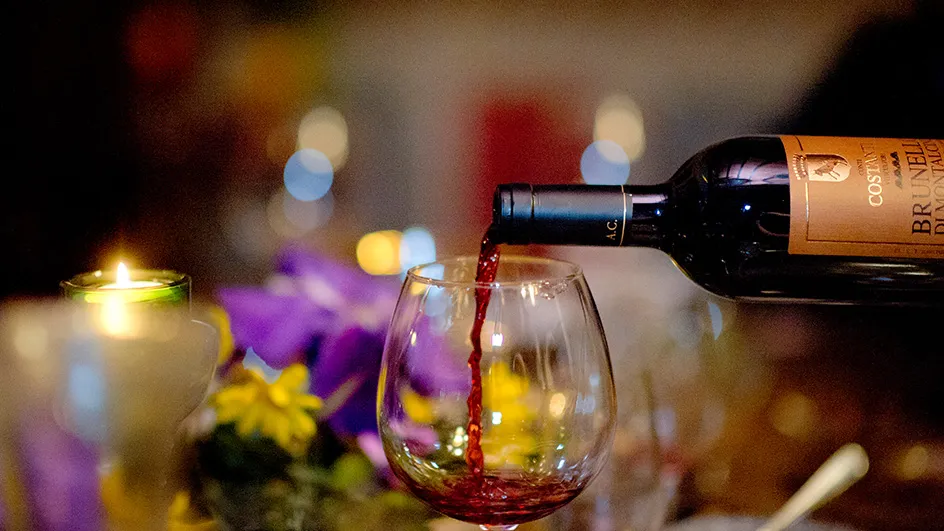In order to find your sweet spot in the world of red wine, you may need to engage in a considerable amount of trial and error. Today's finest red wines follow this general pattern, but with a couple of millennia's worth of innovation added. The aging process in oak barrels, filtration, cultivation of yeast, and modern vineyard practices are all relatively recent additions to the red wine experience. Different regions of the world have different traditions and mandates governing the production of red wines: there are different rules in each region regarding which grape varieties are allowed, how long the wines must age, what the final alcohol content of the wine is, and how it must be labeled.
The rules of winemaking vary by region, but also by how grapes express themselves. Pinot noir is, for example, a difficult grape to cultivate because of its delicate skin and difficulty ripening in regions with insufficient sunlight. A California pinot noir is typically ripe, powerful, and fruit-forward. There are various styles of Pinot Noir produced in the various villages of Burgundy, France: some are more fruit-forward than others, while others are remarkably earthy and fully infused with acidity and tannin. Not to mention the unique styles and practices cultivated by each winemaker.
Red Wine: How To Serve It
Be careful to not overfill large glasses of red wine when serving it. Ideally, it would be best to have a quarter of a glass full of wine, so that the wine can breathe and release as many of its delicate aromas as possible. When it comes to serving temperature, red wines should be served at a temperature that is just below room temperature (15 to 18 degrees). If you want to serve your red wine chilled, pop it in the fridge for 10 minutes before serving. As opposed to popular belief, serving red wine too warm risks overwhelming its aroma.
Decanting Red Wines: When and Why
If you decide to decant your red wine, it will largely depend on the style of wine you are drinking. It is said that decanting can open up a wine, enhancing its subtlety and softer tannins. This is especially beneficial for wines that are particularly tannic, such as malbecs and Cabernet Sauvignon, as well as young wines, where decanting soften fruit flavors and enhances spice depth. The wine undergoes changes when it is poured through oxygen. Leaving the cork removed and the bottle to "breathe" in the corner while you prepare dinner will not result in the same outcome.
Red Wine and Food Pairings
There is no doubt that red wine is far more versatile when it comes to matching flavors than a variety of special bottles that are kept for steak nights. It would be a great idea to use a fruity Beaujolais wine, which has a low tannin content and a high acidity level, with lighter dishes like a Panzanella made with fresh tomatoes. As these wines develop meatier forest-floor flavors with age, older Burgundies are a perfect pairing with game and mushroom dishes, while aged Bordeaux works well with slow-cooked lamb or aubergine parmigiana dishes.
The Best Way To Store Red Wine
In order to avoid oxidation and to keep the cork moist, red wine should also be stored on its side in a cool, dark place so that it does not oxidize. In case you don't yet have access to your own cellar, then a wine fridge or a cupboard under the stairs will be sufficient for storing your wine. You should never store wine in the garage since the temperature oscillates between summer and winter, which will result in the wine aging prematurely as a result of the fluctuating temperatures.
When It Comes To Red Wine, How Much Should You Spend?
There is more to a perfect bottle of red wine than grapes, graft, and skill. Although they are important, the price also reflects the cost of oak barrels, bottles, corks, labels, shipping, and taxes. To ensure premium quality, it is, therefore, advisable to invest a little more in a bottle. The cost of wines that you intend to age or invest in will be higher if you intend to age them.
The fact that red wines are made in all major wine-producing nations around the globe makes it difficult to put them all on one list, but that won't prevent us. These red wines deserve your corkscrew because they are excellent and diverse.
Girolamo Russo 'a Rina Etna Rosso
After Girolamo Russo passed away in 2003, his son Giuseppe began bottling wine under his name after he owned vineyards on Etna for decades. The sea-influence vineyard is cultivated by Giuseppe on 18 hectares at 800 meters above sea level. There is organic farming practice at the estate, as well as indigenous varieties and native yeast fermentation. This earthy and red-fruited Nerello Mascalese Etna Rosso is characterized by the flavors of scorched earth, cherry, and tobacco. A unique blend of rustic and harmonious flavors, Russo's wines feature zesty acidity and volcanic flavors. One of the remarkable features of Giuseppe's Estate Etna Rosso, 'a Rina, is its average vine age of 80 years. A Rina 2019 was harvested from Alberello vines planted in San Lorenzo, Feudo, and Calderara cru vineyards located 650 to 800 meters above sea level. Spontaneous fermentation takes place in large Slavonian oak barrels, where the wine spends one year before being bottled. There is a strong aroma of cranberry and cherry fruit, as well as smoke and tobacco. With savory earth notes and dark mineral undertones, the palate is juicy and bright with delicious red fruit. The wine has a fine velvety tannin structure and is compact and intense.
Larkmead Napa Valley Cabernet Sauvignon
A deeper understanding of the microclimate and the soil beneath the vines has allowed Larkmead to create a wide variety of wines. A cellar is a place where the wines are allowed to express themselves freely. There is a natural phenomenon called terroir that accounts for the different treatments of different wines, not their quality potential. At Larkmead, Cabernet Sauvignon is the jewel in the crown of the estate's portfolio and is also the best opportunity to demonstrate its diversity. Incorporating deeper, richer soil profiles (Pleasanton loam series) from both A and C blocks, this wine is the size of a "baby Solari." A wine made in the image of Solari is a blend of grapes from young and old vines, but it cannot be replicated by man - and that is the difference between Solari and the estate Cabernet Sauvignon.
Barons De Rothschild Legende Bordeaux Rouge
While being a testament to great culture and unique civilization, Bordeaux vineyards are known for producing wines that are both fresh and elegant, which remain easy to drink while displaying great culture. The Bordeaux Rouge from the Collection plays to the tradition of Cabernet Sauvignon and Merlot grape varieties as an everyday wine or a glass shared by the fireplace. There is a strong presence of Cabernet Sauvignon in this wine, which ensures the classic elegance that people associate with "Maison" style, and the aging adds character and roundness. With flavors of red berry fruit, warm wild berry compote, vanilla, earth, and sweet oak spice, this Bordeaux Rouge is sure to please.
Felton Road "Cornish Point" Pinot Noir
In Felton Road's story, compromise is not an option. A strict 100% estate policy and biodynamic viticulture (Demeter certified) ensure that our fruit reaches the winery as pure as possible and that the entire estate is as sustainable as possible. With hands-off winemaking, gravity flow, wild yeasts, and wild malolactic fermentation are all used to preserve the wine's terroir expression. The grapes for this wine are grown at Cornish Point Vineyard, where the proximity to water results in a unique microclimate. Black cherry aromas blend seamlessly with violet and rose aromas as well as earthy, dried herb notes. As a young wine, Cornish Point exhibits hints of dark fruits, raspberries, roses, and crushed herbs on the nose. On the palate, there is a core of dark raspberry, followed by dark petals (roses and violets), with a pleasant whiff of char. There is a sense of serious texture and harmony, opulent yet refined. This is a dark and powerful expression from a vintage of outstanding quality.
Penfolds 2019 Bin 389 South Australia Cabernet/Shiraz
Often called 'Baby Grange' because the wine matures in the same barrels that held the previous vintage of Grange, Bin 389 is referred to as a 'baby Grange'. Max Schubert made this wine in 1960, helping to forge Penfolds' reputation with red wine drinkers by combining the structure of Cabernet Sauvignon with the richness of Shiraz. Bin 389 is a classic example of Penfolds' generous mid-palate, highlighting the judicious balance between fruit and oak. The abundance of self-standing fruits has already begun to yield other vinous purposes. Juniper and spice bind with cola, grated chocolate, and cappuccino dust. A flash of brown sugar and licorice - not quite in the Marsala spectrum - instead, blood orange rind replaces brandy impressions. In spite of oak being somewhat partially hidden, faint scents of cedar and graphite entice you to continue to age your bottles. Complexity unabashed (Baby Grange). It takes time for some overtly single-varietal cabernet and shiraz fruits to come together. In the background, there was dark chocolate and mocha, along with blackcurrant, stewed plum, and licorice. Acidity that makes your mouth water - mouth-watering and salivating. A combination of acidity and tannins coats the mouth and adds length. There's a lot of length and concentration here, with the Bin 389 'sweet' core; oak is completely absorbed. A polished and refined finish.
J. Bouchon País Salvaje
It is unquestionable that the País grape is Chile's living heritage. This grape variety came from the Canary Islands in the 16th century, as part of the luggage of Spanish religious orders. Loncomilla and Cauquenes, both dry areas of the Maule region, have naturally adapted to the red, rustic, and resistant grape varieties. The plant grows freely on its own head without wires, requiring little management. Maule vines are over 200 years old, surviving droughts and diseases without irrigation for more than 200 years. Among the red wines produced here are fresh, rustic reds that are flavorful and juicy. Vinified naturally by Wild Country. During fermentation, the grape clusters were left whole, and natural yeasts were used to complete the fermentation, followed by aging in cement, not oak, to maintain their aromas and flavors. A filter was not applied to the wine before bottling. Despite its delicate nature, Wild Country has a great deal of personality. The aromas of flowers, strawberries, rosehips, and cherries are prominent. This juiciness, freshness, and lightness are felt in the mouth. Ideally paired with Chilean dishes, such as empanadas, prietas, and huasos.
Achaval-Ferrer Quimera
A wine of remarkable precision, Achaval-Ferrer's Quimera blend was hand-crafted by Santiago Achaval and winemaker Roberto Cipresso. It is often blended with malbec, cabernet franc, merlot, and cabernet sauvignon grapes, all of which are native to France's Bordeaux region. Malbec is Argentina's most widely respected grape variety. With layers of black cherry compote, salted dark chocolate, and cedar spices weaving in and out of vanilla and clove, this wine is bursting with blackberry fruits and wonderful spices. Throughout, there are flourishes of rose petals and dried herbs that build to a palate-coating richness.
Woodward Canyon Artist Series Cabernet Sauvignon
"Artist Series" Cabernet Sauvignon is produced from grapes taken from some of the best vineyards in Washington State and the Walla Walla Valley. Their individual wines are fantastic, but when blended together, they produce extraordinary wines. It has a dark garnet color and an aroma of black fruits, chili powder, tomatoes, and lead pencil, which blend beautifully with the subtle oak. The wine has ripe fruit, good balance, and proportion in the mouth. There are integrated tannins that enhance the texture; the finish is generous, long, and complex. Even though this wine can be enjoyed now, it will benefit greatly from additional cellaring and, with proper storage, should develop for at least ten years.
Cooper Mountain Pinot Noir
Willamette Valley in Oregon, with its maritime climate and similar latitude to France's pinot-producing Burgundy region, has been recognized for decades as an excellent growing location for quality pinot noir. From the beginning, Cooper Mountain Vineyards, founded by Bob Gross in the early 1990s, had always focused on organic and biodynamic farming. As a pioneering force for responsible farming in Oregon, the winery became organic-/biodynamic-certified over 20 years ago. Cooper Mountain's pinots are reaching new heights with the help of Gross' daughter, Barbara Gross. Using organic and biodynamic farming practices, the wine is fermented with indigenous yeasts and aged in new oak barrels for 10 months. Red-magenta color and well-formed legs distinguish this specimen. Medium-bodied and dry with freshly balanced acidity and medium levels of phenolics, the wine is dry and medium-bodied. The wine is supple, ripe, and fresh with lots of red and darker red berries, spice, earth, and hints of cola. Layered, textured, and multidimensional, this wine is integrated and complete.
Charles Krug Cabernet Sauvignon
A classic, elegant, artfully balanced wine that has stood the test of time since 1944, Vintage Selection is the ultimate expression of Charles Krug's portfolio. Featuring aromas of sweet currant, toasted pecan, vanilla, and cocoa nibs, the flavors are blackberry and raspberry with a touch of violet and cacao. Throughout the wine's long, complex fruit finish, there is an elegant, creamy texture. From beginning to end, the 2018 vintage was characterized by nearly perfect growing conditions. In spite of abundant February rains, vineyards and grape clusters enjoyed ripening sunshine and cool maritime influences throughout the rest of the season. Devoid of any major heat spikes, the temperatures remained steady throughout summer and into fall. With the harvest of reds continuing well into November, it was a leisurely, unhurried affair. The extended hang time on the vines resulted in fruit with a great concentration of flavor and natural acidity, resulting in exceptional wines.
Tyler Winery Sanford & Benedict Pinot Noir
The original Santa Rita Hills vineyard plantings were planted by Richard Sanford in 1971 at this site. Soils at Sanford & Benedict Vineyard consist of Botella clay loam covered in chert and shale. A large amount of drainage is achieved throughout the vineyard due to these alluvial soils, which are commonly found on valley floors. Among the influences on Justin Willet are the wines of Roulot, Bonneau du Martray, Dujac, Bachelet, and Rousseau. Tyler wines are made with grapes picked earlier than most in order to achieve fresh aromatics and flavors with minimal use of oak. A very complex and pure pinot noir is produced from Sanford & Benedict vineyard's old vines. Pureness is what makes this wine stand out from others. There are beautiful flavors of spiced cherry, smoke, licorice, dark fruits, and an earthy, spicy, and mineral undertone to the wine. Throughout this amazing wine, there is an overall theme of juiciness, freshness, and structure. Finish: incredibly long with a bitter cocoa bean and cranberry finish, gentle tannin structure, and mineral backbone. This is one of California's best Pinot Noirs, if not the best in the country, in our opinion.
Prats & Symington Prazo De Roriz
The partnership between Bruno Prats and the Symington family in Portugal's Douro valley, one of the world's most famous winemakers, began in 1998 when Bruno Prats (formerly of Château Cos d'Estournel) in Bordeaux set out to produce a flagship Douro red wine. As a result of the deficit rainfall from the previous year, 2018 started out very dry. Despite this, the spring brought abundant rain, with all months between March and June recording above-average precipitation levels, which replenished soil water reserves abundantly. Due to the wet, cool spring and generally unsettled conditions, the crop size shrank in the summer. It was inevitable that the vine's growth cycle was delayed, but a hot and dry August helped things get back on track. This wine's balanced acidity comes from the good climatic conditions in early September that favored the balanced ripening of the berries. Touriga Nacional was picked on the 20th of September and Touriga Franca on the 27th. On September 17th, the vintage began in Roriz and Perdiz vineyards. A distinctive minerality and peppery spice characterize the terroir of the Quinta de Roriz in the Prazo de Roriz.
Vega Sicilia Único 2009
Vega Sicilia is a vineyard planted on mostly limestone soil reminiscent of Burgundy, and it produces some of the best wines in the world. It is important to note that this mythical wine has no connection with Sicily but rather stems from the Santos Sicilia family, who owned the vineyard before 1864, with "Vega" meaning "valley" in Spanish. 210 hectares of this 1000-hectare property are used for vines, which can rise to 700 meters above sea level. With an Atlantic influence, the climate is continental. One of the peculiarities of Vega Sicilia is its unique breeding, which remains a source of controversy. Indeed, matured in large oak barrels the first year, it is transferred to barrels of different sizes and ages. This wine of phenomenal power is then aged for five to ten years, softening its character. Tempranillo and Cabernet Sauvignon are blended in this 2009 vintage, aged six years in oak prior to bottling, and allowed to rest in the bottle for another four years. A fresh and elegant wine, alternating between deep forest underbrush, cigar box, and muddled blueberries, the mouth is filled with ripe cherries and spiced plums.
Emidio Pepe Montepulciano D'abruzzo
In its dialectical relationship with time, Emidio Pepe's Montepulciano d'Abruzzo is an icon of Italian viticulture. It has always been part of the small circle of our wines of the heart, and this Montepulciano, produced by one of the most renowned and esteemed wineries in Italy, does not need any introduction. Different vintages of Emidio's wines can be drunk vertically to fully appreciate their greatness and immense evolution potential, reserved only for the best red wines. The idea of producing quality wines that faithfully reflect vintage and region in Torano Nuovo, Teramo, has evolved into something more, something that fills the hearts of wine lovers, something legendary. The Pepe Montepulciano d'Abruzzo grapes are sourced from 30-year-old vines growing on clay and medium-textured soil. While Emidio's mentality centered on grapes and healthy soil, the vineyard followed organic farming principles and incorporated some biodynamic practices. Grapes are manually destemming and spontaneously fermented in the winery before hand bottling and decanting. It ages in cement tanks for 24 months. Despite its intense ruby red color, Montepulciano Pepe wine is not at all penetrating in the glass. While the nose initially demonstrates hints of wine and fresh fruit, it then enhances its profile with hints of graphite, earth, and underbrush as it ages. This wine is compact and austere on the palate, always driven by beautiful acidity and a vital tannin structure…
Louis Latour Château Corton Grancey
In 1891, the Latour family bought the chateau on the road of Corton from the last owners, "Grancey". It is a unique and exclusive wine made by Maison Louis Latour. There are five vineyards in Domaine Latour Corton Grand Cru: Bressandes, Perrières, Grèves, Clos du Roi, and Chaumes, and the proportions vary with the vintage. More than 40 years have passed since the vines were planted. The Château Corton Grancey is created by assembling only the best barrels after they have aged individually. A wine of this type is produced only if the grapes have reached perfection, and inferior vintages are declassified systematically. There is a hint of nutmeg, raspberry, and licorice aromas in the nose of this Château Corton Grancey 2019. Featuring silky tannins, the palate offers ripe red berries with hints of wood. This powerful wine is remarkably long on the finish, showing all its depth and aromatic persistence. The wine pairs well with wild boar, roasted beef, roasted quail, duck "à l'orange," and mature cheeses.
Gaja Barbaresco
The flagship wine of the GAJA family is Barbaresco. The meticulous blending of 14 vineyards results in this benchmark Nebbiolo. Before being blended and aged in oak for another 12 months, the grapes, sourced from individual single vineyards, undergo separate fermentation, maceration, and maturation. A complex and balanced Nebbiolo is created by blending 14 vineyards from 14 different terroirs, in order to emphasize the distinctive characteristics of each. There are notes of fruit, flowers, spices, and minerals in the bouquet. Despite the dense structure, it is elegant. Tannins are refined with a lingering finish. In every GAJA Barbaresco, the vintage is faithfully expressed and well-suited for aging in the bottles.
Berry Bros. & Rudd Good Ordinary Claret
Since many years ago, "GOC" has set the benchmark for reliably delicious Claret. Using Merlot and Cabernet Sauvignon, this classic Bordeaux blend shows the depth and body of the 2018 vintage. It has a rich nose of pure cassis and bramble fruit, mixed with warm, smoky oak aromas. A fine, complex structure frames the succulent blackcurrant fruit on the palate, while a rounded, juicy, and very moreish finish rounds out the experience. Designed for early drinking, it can be enjoyed at almost any time.
Quinta Do Ataide
Located in the Douro Valley, Portugal, Quinta do Ataide Tinto is a red wine produced in the Douro Superior wine-growing region. The Symington family owns Quinta do Ataide. They own over 1000 hectares of vineyards in the Douro Valley, spread over 26 vineyards. With three Quintas in Vilarica Valley, Quinta de Assares, Quinta da Canada, and Quinta do Ataide, they are also the largest organic wine producers in Portugal. The Quinta do Ataide also houses the Symington Grape Variety Library, established in 2014, which comprises a vineyard with 53 different grape varieties to deepen knowledge of the various varieties of Douro grapes. For Quinta do Ataide Tinto, the grapes are a typical Douro field blend: Touriga Nacional, Touriga Franca, Tinta Barroca, Tinta Roriz, and Tinto Cão. In order to ensure the best conditions for arrival at the Adega de Reservas winery at Quinta do Sol, they are harvested by hand in 20kg boxes. Hand sorting and gentle destemming are performed on the grapes, and they are then transported without pumping to the fermentation tank. To maximize the potential of the grapes, each fermenting tank is closely monitored and temperatures, maceration procedures, plunging, pumping over, and delestage are adjusted accordingly. A French oak barrel ages the wine for 8 months. It is made by Charles Symington and Pedro Correia with assistance from the Symington DOC Douro winemaking team.
Artuke Pies Negros
Spanish wine is best exemplified by Arturo Blanco and Kiki Blanco, who are winemaking brothers. Rioja winemakers' sons and grandsons have the ancestral knowledge necessary to make great wine. This is coupled with their desire to create vibrant, terroir-driven wines that are consistently rated and acclaimed as among the best. The 2018 Pies Negros were made with grapes from the Sierra Cantabria in the village of Balos, so another village wine, even if the winery does not exist. This wine is a blend of Tempranillo and Graciano fermented with destemmed but uncrushed grapes using indigenous yeasts, and it was aged for 12 months in oak barrels except for 10% that were kept in concrete. The aromas were subtle and elegant, and the wine didn't stop growing in the glass. At least in some of the wines, like this one, they seem to have mastered the reductive techniques since they began working with larger oak containers. This long-cycle vintage has a tendency toward wines that are subtler and less immediate than those aged in barriques. Red fruits, bright flavors, and good precision are evident on the palate, which is very balanced and fresh.
Frog’s Leap Zinfandel
It is no secret that the monster Zins of the 1990s are still in fashion among winemakers like John Williams and Paula Moschetti. Like fashion, these drinks command monster prices due to their "big" alcohol, "big" flavors, and "big" bottles. However, Frog's Leap Zin stands out from the rest. Light your barbecue with this stuff, but don't use it for lighting. In the 1940s and 1950s, Zinfandel was inspired by the incredible Zins of the time: field blends of Petite Sirah, Carignan, and sometimes Napa Gamay, all picked at ripeness, added color, aromatics, and earthiness. The Zinfandel grape's true flavor is revealed with the help of other varietals. It is these principles that underlie the creation of Frog's Leap Zinfandel. The fruits of the Zinfandel vines at Frog's Leap are becoming increasingly complex and finesse as these vines get older. Typical Rutherford characteristics of earth and dust can be found in this Frogs' Leap Cabernet Sauvignon. Combined with a mineral tone and a touch of spices, this aroma is reminiscent of cassis and currants. Throughout the palate, notes of pomegranate, spice, cedar, and green olive enhance the rich flavors of black cherries. Firm yet yielding tannins and bright acidity balance this wine's plush texture and softness.
Gusbourne Boot Hill Pinot Noir
It's time to take some English still wines seriously now that we've mastered English sparkling wines. The Kentish village of Appledore produces exceptional wines like Pinot Noir by Gusbourne. A wine with complexity, finesse, and a persistent finish displaying plump red fruits, dark plum, and black cherry alongside black pepper spice, smoky notes, and an earthy minerality. Upon tasting, wild raspberry and cranberry aromas combine with an earthy spiciness and ripe strawberry flavors. Pairing Pinot Noir with Sardine Bolognese, a modern take on an Italian classic. A crispy red fruit on top of oily fish and tomato sauce makes a great combination.
2019 White Label Coonawarra Cabernet Sauvignon
Elegant and full-flavored, this Coonawarra Cabernet Sauvignon shows spicy, juicy bright fruits for which the region is known. There are aromas of licorice, cassis, and cedar, complemented by black fruits and a slight hint of mint. It has a bright and juicy palate with lovely supple tannins. This classic Cabernet Sauvignon will reward careful cellaring for a decade. Serve alongside roast or grilled lamb. In keeping with the Petaluma philosophy, the White Label range is handcrafted in the same way as the Yellow Label. Coonawarra and Adelaide Hills are key regions for producing grapes. It is ideal to enjoy these wines with friends, family, and food upon their release.
Redheads Dogs Of The Barossa Shiraz
Dogs of the Barossa is the story of a young dog living in an old dog's world. In the ancient Barossa, home to some of the world's oldest vineyards, we find ourselves once again proving our worth. The vines are almost 200 years old. The French can't compete with it. In the Barossa, the young dog has proven his strength and vigor after leading the pack in McLaren Vale. This shows that, in a world full of legendary wines (Henschke, Penfolds, Lehmanns, Wolf Blass), our wines still stand out, and in time The Dog will run among the best. The label indicates that this dog has enormous potential ... an ultra-sensitive nose to smell every trace of an aroma, an impeccable palate, and a liver that can handle all those tastes. To maintain stability and balance at all times, it has long articulated tails and powerful hindquarters. Its paws are wide-based, ideal for treading grapes.
Purple Owl Pinot Noir
There are few places where Pinot Noir will grow, as it is a finicky grape. The silky, beautifully perfumed perfection of this wine can be found only in very few places outside its homeland of Burgundy. Among them is California's coastal region, where we found Purple Owl. Purple owl's clover blankets the vineyards of California's Central Coast, as pretty as its watercolor label. This is another ripe-fruited star from 2016. It boasts layers of vibrant black cherry and raspberry, as well as hints of violet and silky texture, all made from premium grapes sourced from top Central Coast vineyards. There is so much to love about Pinot Noir for wine lovers. There are ripe raspberry, cherry, and redcurrant notes at play in this Californian pinot noir, but a complex smoke and leather backbone temper the sweetness. This pinot noir takes top honors in the pinot noir stakes because of its ripe tannins and long, satisfying finish.
Bread And Butter Cabernet Sauvignon
There are layers of mocha, fresh berries, blackcurrant, subtle black pepper, toasted oak, and rich vanilla in this robust wine. Featuring smooth tannins and a sweet vanilla finish, the wine is round and soft with a hint of spice. Red wine is seasonal, as in good all year round. There is no doubt that Cabernet Sauvignon is a world-renowned wine, and it is produced in California. Designed to embody the best of California, this is a limited-edition offering. In keeping with Bread & Butter's philosophy of simple pleasures, its wines are also crafted with that in mind. To deepen the complexity and soften the texture of this classically-styled Cabernet, it is aged in both French and American oak barrels. It is a complete flavor explosion on the palate when paired with our Cabernet Sauvignon. In addition to bringing out the earthy tones in the wine, the sauce's subtle sweetness brings out the dark red fruit.
The Hedonist Ecology Organic Shiraz
A total of at least three vintages went by without average rainfall in the ripening season of 2021. Besides a wet winter and luscious spring, McLaren Vale also experienced a significantly cooler summer. Fruit set, flowering, veraison, and final ripening were all characterized by excellent ripening conditions. As compared with the previous few vintages, yields were up, with perhaps the best quality vintage this century. The long and drawn-out harvest produced wines with a superb balance of natural acidity, texture, and tannins. Following selective harvesting, the indigenous yeast started naturally fermenting. Once 12 days have passed on the skins, they are gently pressed twice daily by hand-plunking or pumping over. Stainless steel was used for malolactic fermentation and a French oak 4500L foudre was used for maturation. It was a deep cherry red color. There are hints of berries and plums in this bouquet, along with some delightful floral notes. There are hints of cardamom and nutmeg on the palate. The tannins are fine and velvety, while the acidity is bright. There are layers of complexity and texture in the mouthfeel.
Kilkanoon Oracle Shiraz
There has been a production of Oracle Shiraz every year except for 2011 since 1997. Featuring fruit from old vines grown along the Golden Hillside in Leasingham, this wine continues to display the opulence, regional character, and varietal power for which the valley is so widely recognized. Each vineyard was selected for low-yielding parcels of Shiraz based on the concentration of flavors. A careful selection of new and seasoned French oak casks was used to age each parcel for eighteen months following the vinification process using traditional winemaking techniques. The color is dark red with youthful crimson highlights. There is a layer of black olive tapenade and forest berries along with licorice, cinnamon, and cloves. Dark berries and bright red fruits are up front, followed by savory charcuterie with hints of dark chocolate and sweet spices. A velvety finish is achieved by fine, powdery tannins that give length and drive to the fruit.
Giovanni Rosso Cerretta Barolo
The southeast-facing side of this cru is owned by Davide. Sunlight only hits this site in the morning, which produces lighter-colored wines. A rich clay soil lends more generosity to this expression of Serralunga. Harvesting takes place in October. Fermentation in concrete tanks lasts approximately 25 days depending on the vintage, with daily pump-overs of the wine mass. Depending on the vintage, the wine is aged in large oak barrels of 25 or 50 liters (from 18 to 36 months). A perfect nose, elegant and neat; craft jams, wild herbs, chocolate. A powerful, yet soft taste with good tannins; embracing sensation with fruit imprints, and a long-lasting finish. The combination of long-cooking red meats and truffled pheasant is outstanding.
Kleine Zalze Vineyard Selection Shiraz Mourvèdre Viognier 2019
This wine is produced in the Western Cape region of South Africa. For centuries, this majestic tree has guarded the valley where wine is made. This range continues Kleine Zalze's tradition of producing wines of outstanding quality. A rich, spicy blend of blackberry and red forest fruit flavors, with a hint of honeysuckle. Mulberry and rosemary flavors are balanced by well-integrated French oak, providing a long, lingering finish. It has been making wine here since 1695. In today's Cape Winelands, this family-owned winery continues to produce wines of outstanding quality outside Stellenbosch.
By Rashmi Goel


